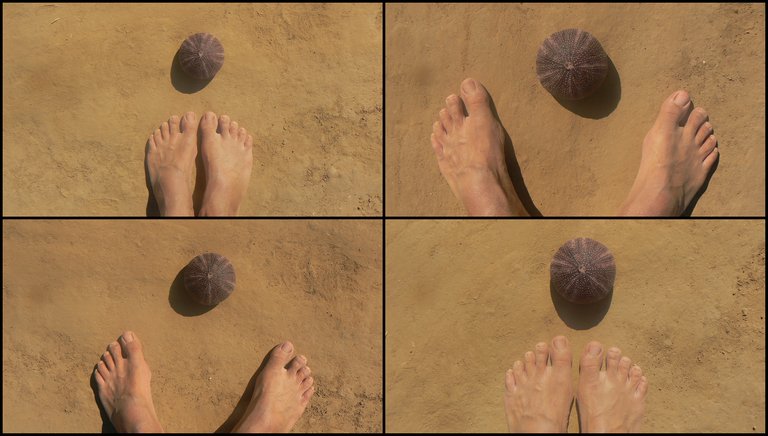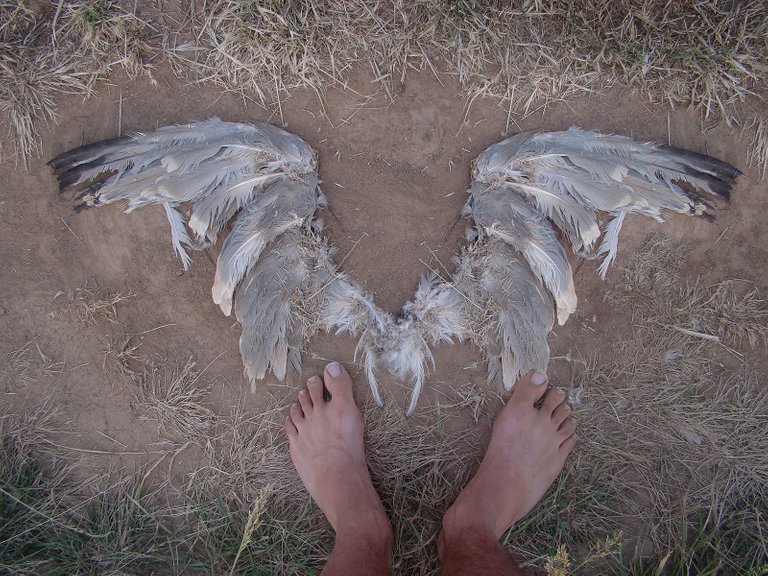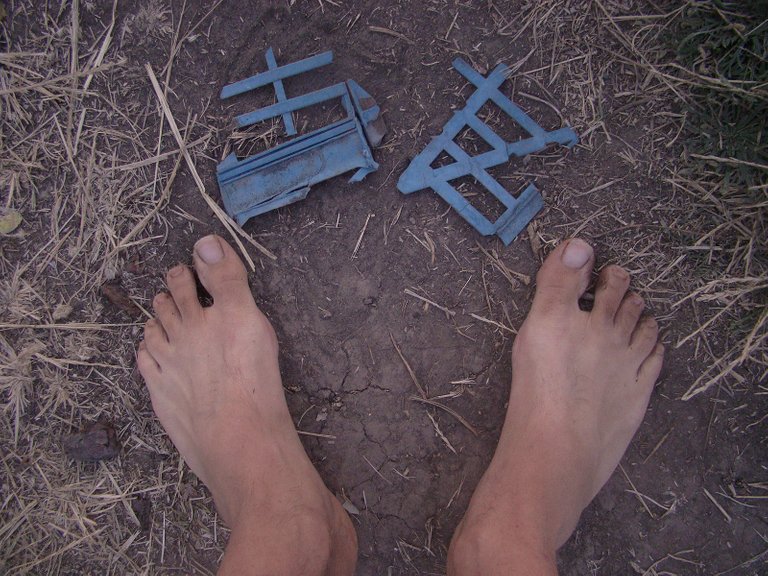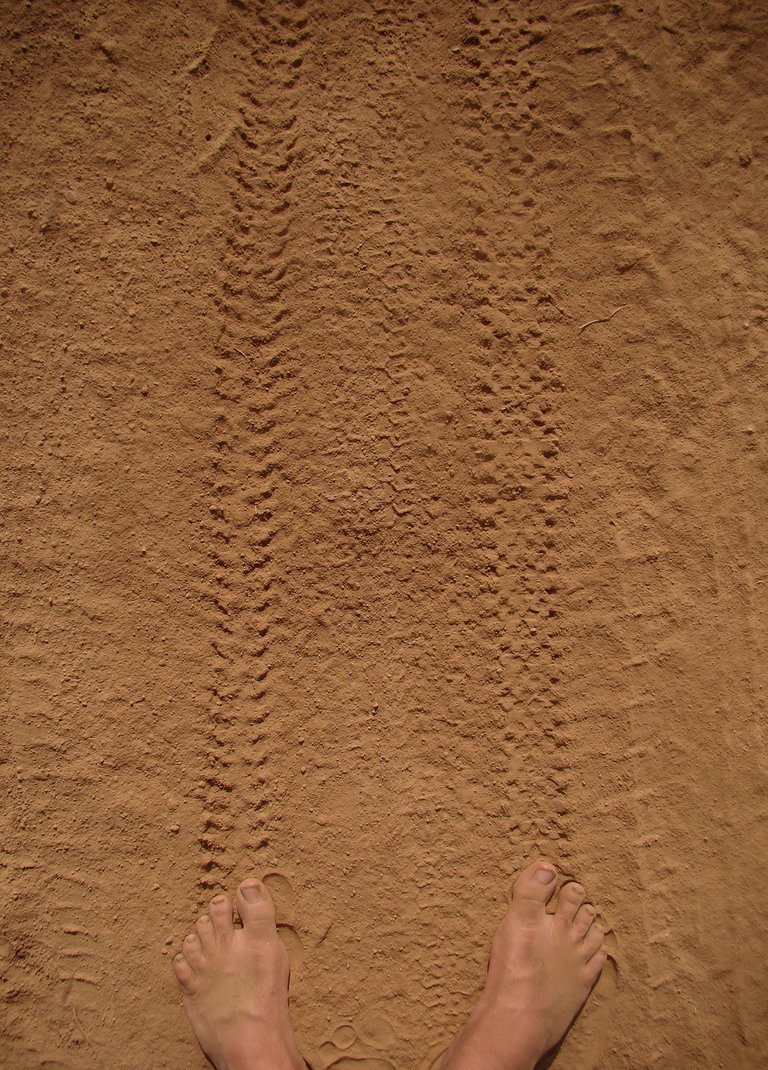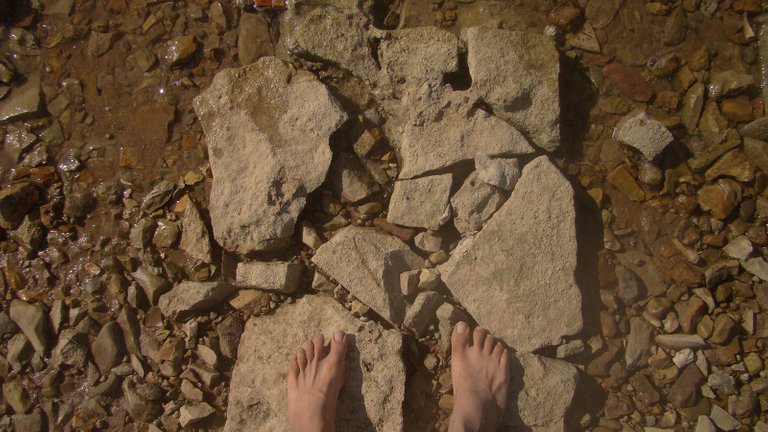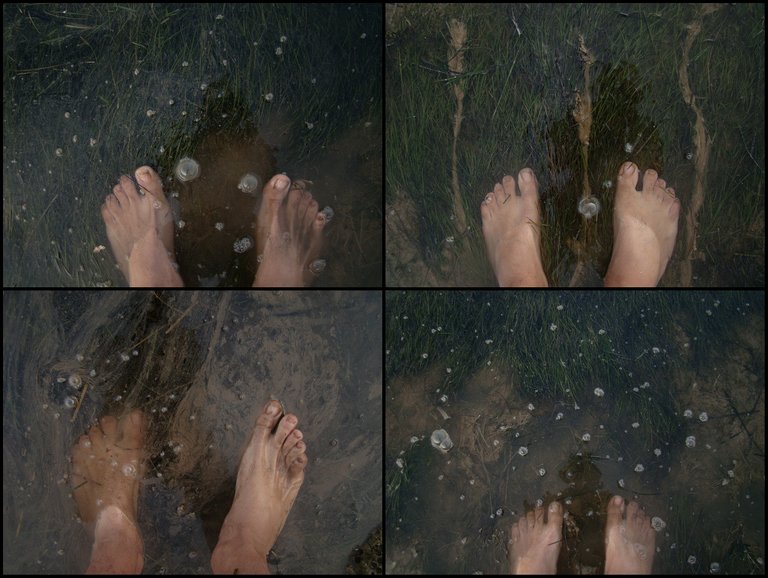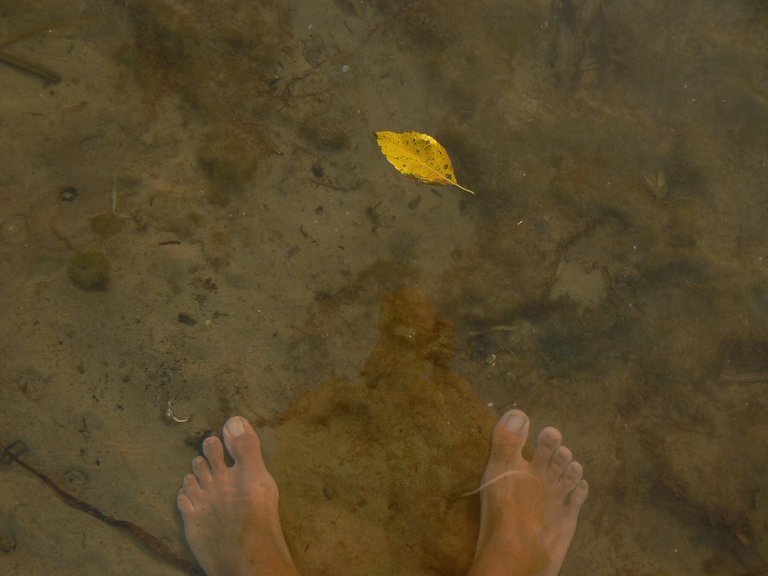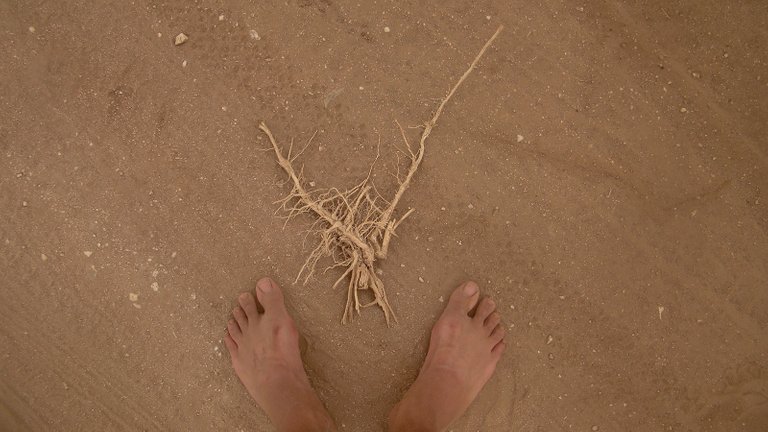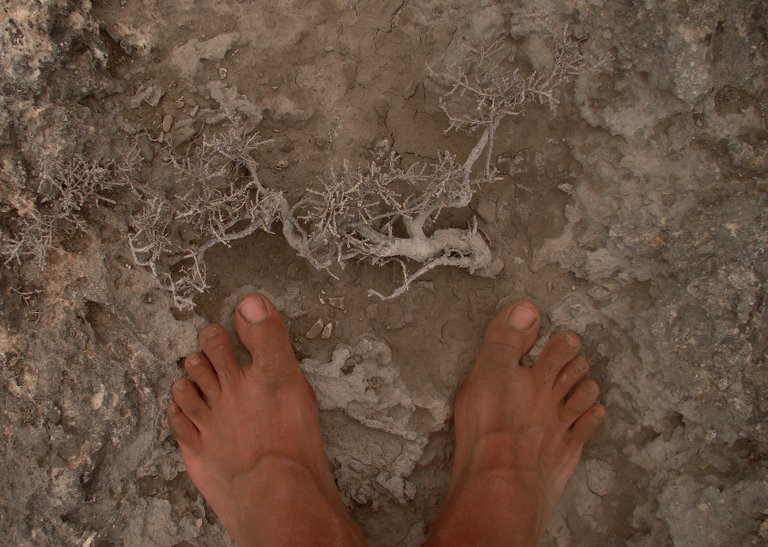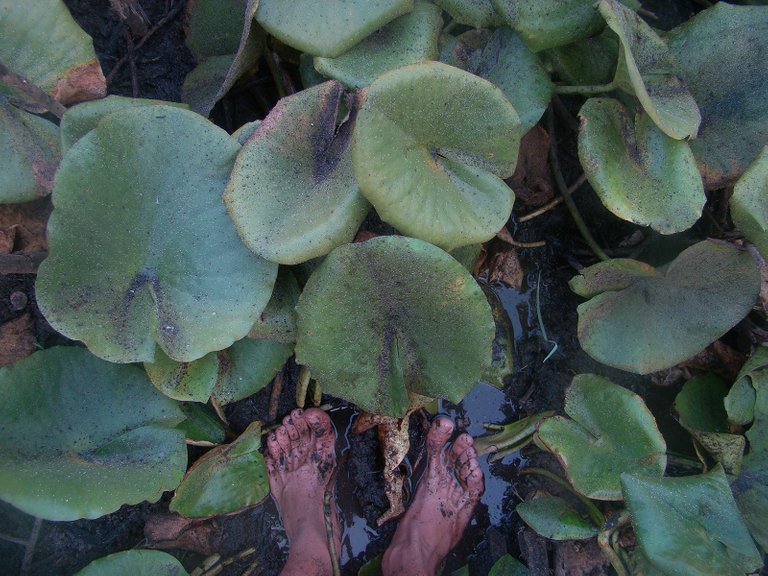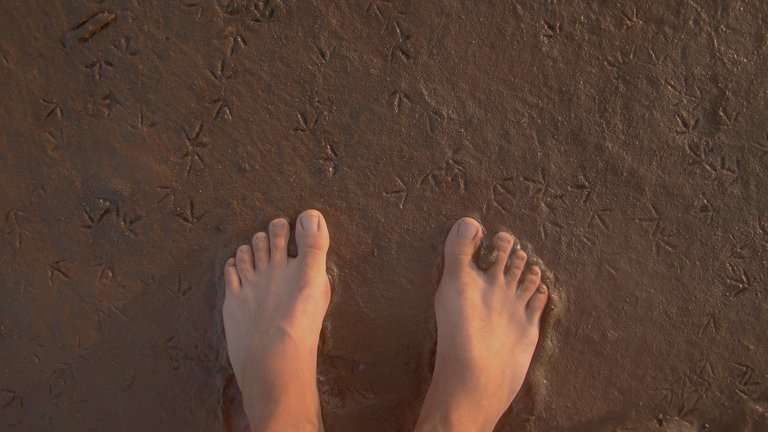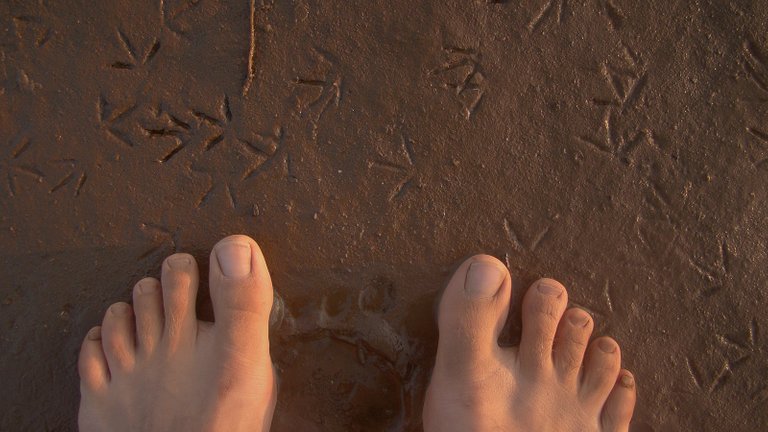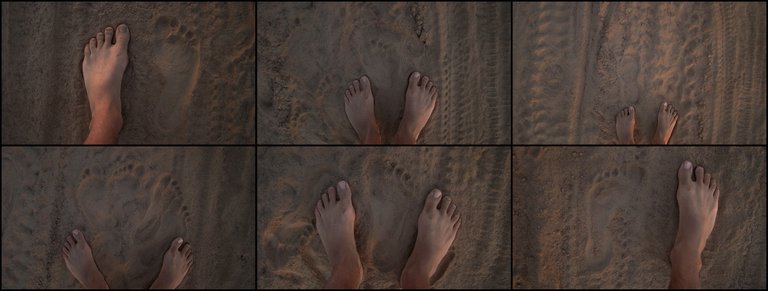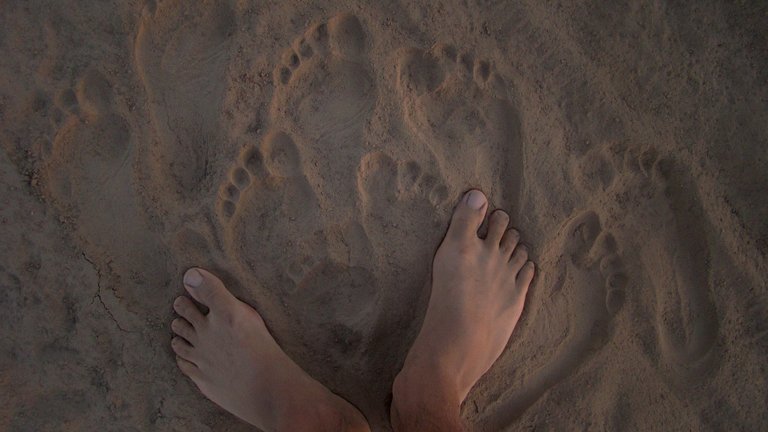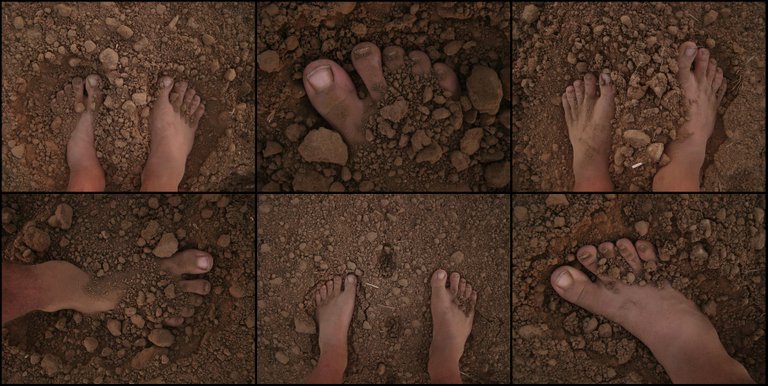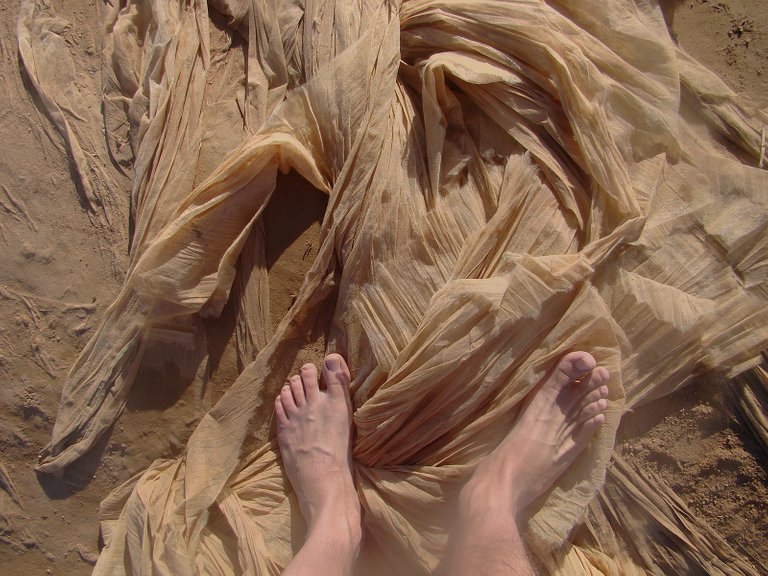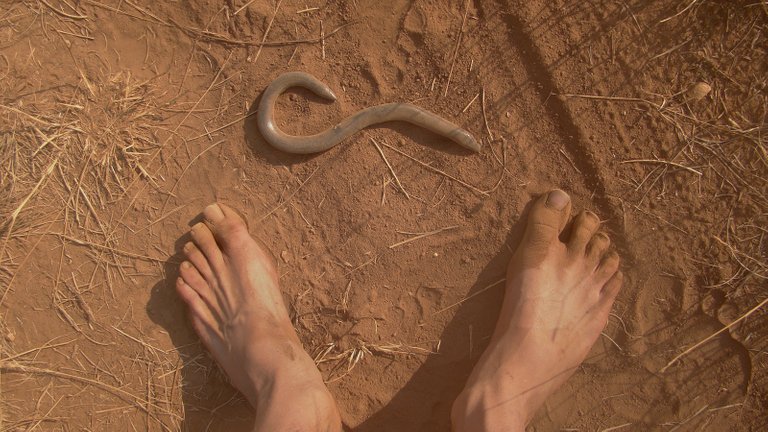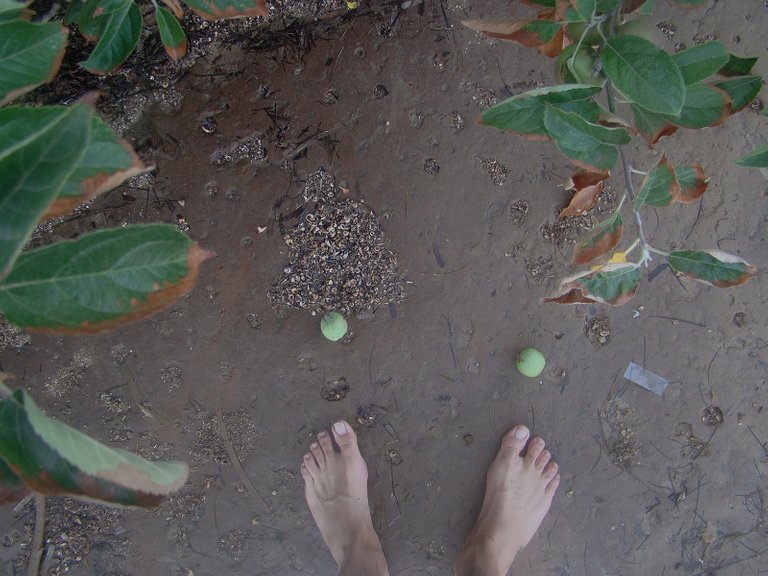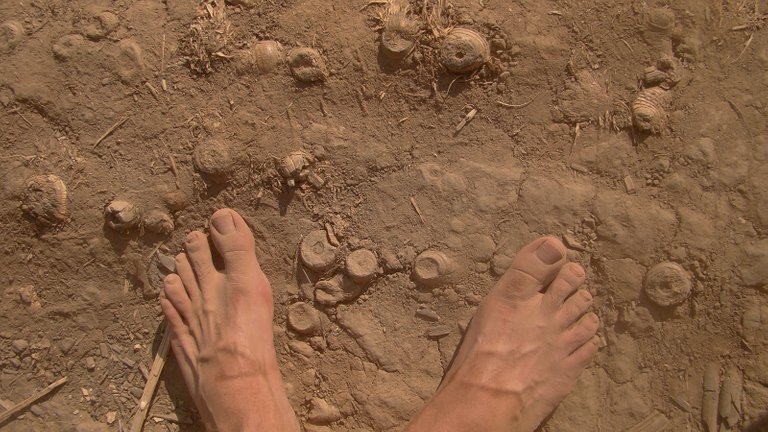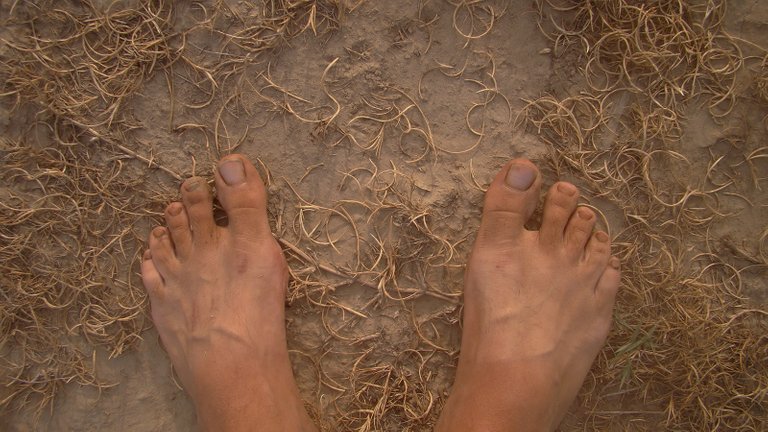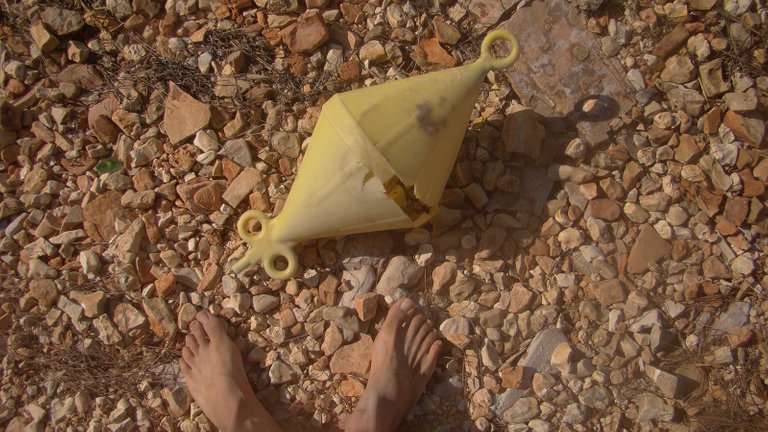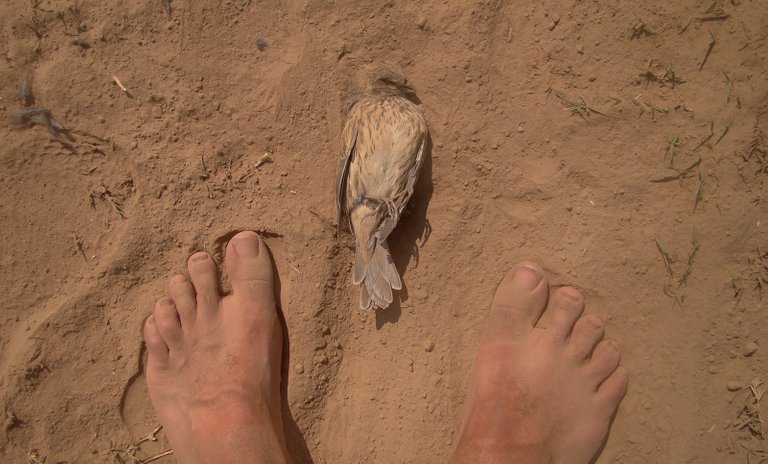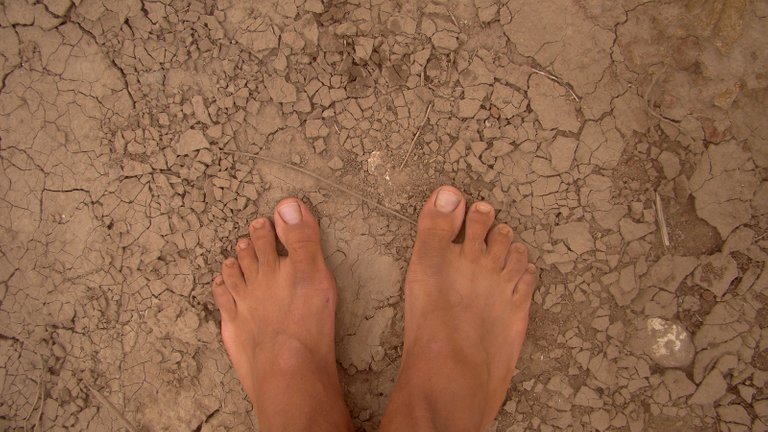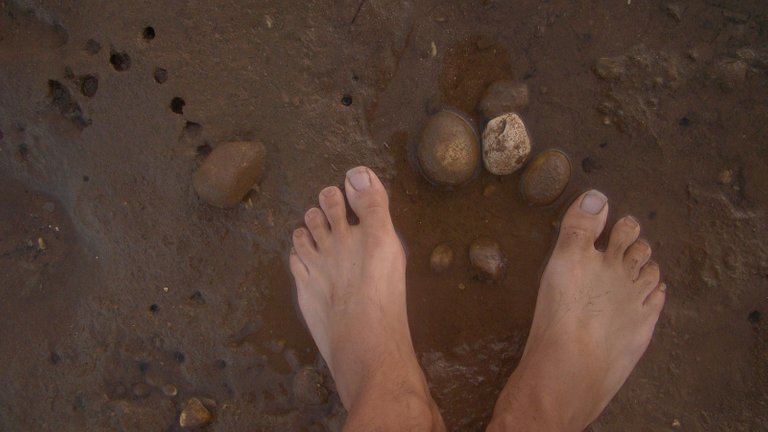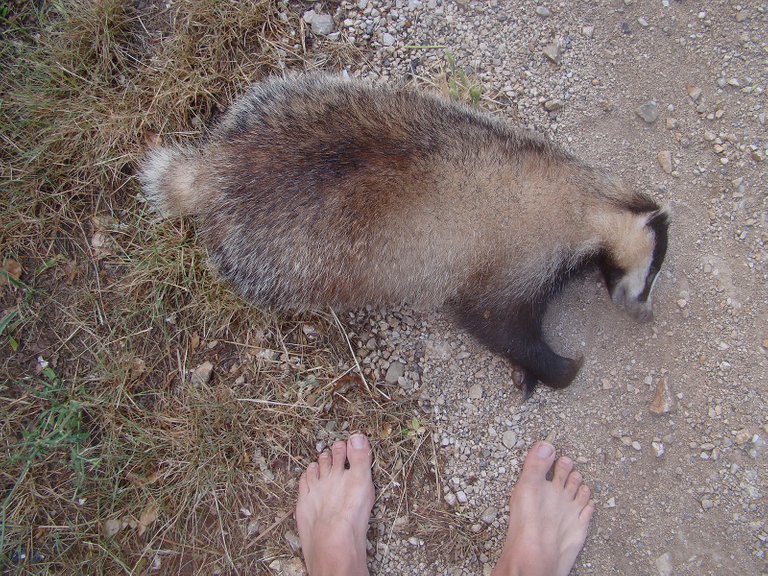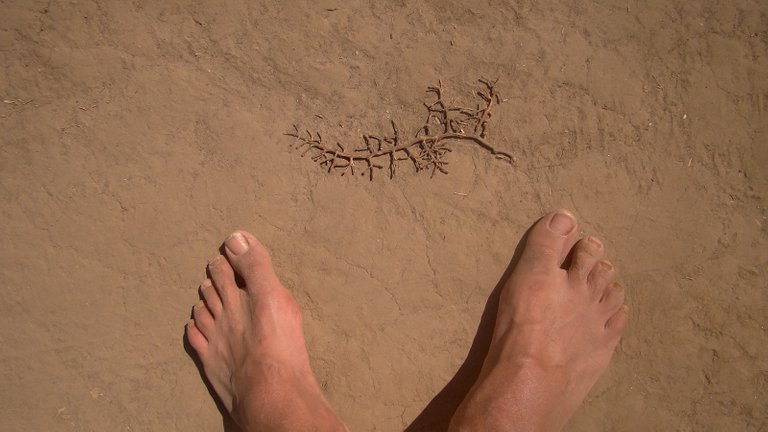The old photographs presented in this post were taken on various occasions, mostly in summer, between 2013 and 2016, but I decided to create an illusion of one long journey seen from the same point of view, from start to finish.
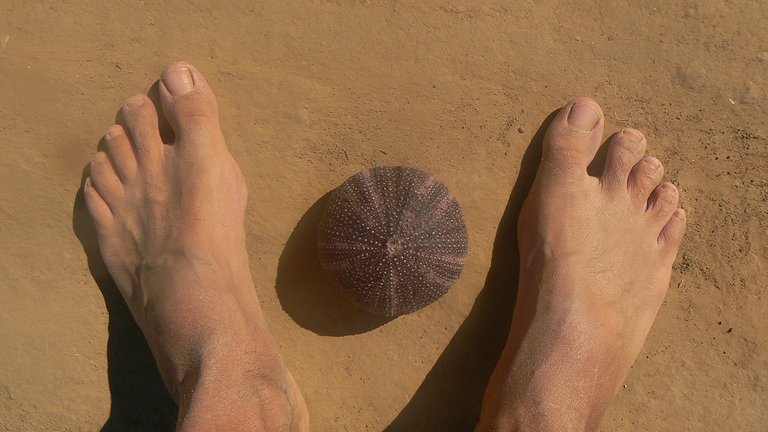
A shot like this, just my feet and whatever it is down on the ground, doesn't look like much when displayed as a single photograph. But, as I hope you'll agree after having walked in my steps through today's post, it can create a fairly interesting piece of visual storytelling when combined with many other shots of the same type.
The journey starts with a sea urchin stranded on the dusty road. The minimalist composition of the shot gives a slight dose of something vaguely artsy to the scene. This spikeless shell was once a Sphaerechinus granularis covered with many short spikes. Sphaerechinus granularis is the biggest sea urchin in this area.
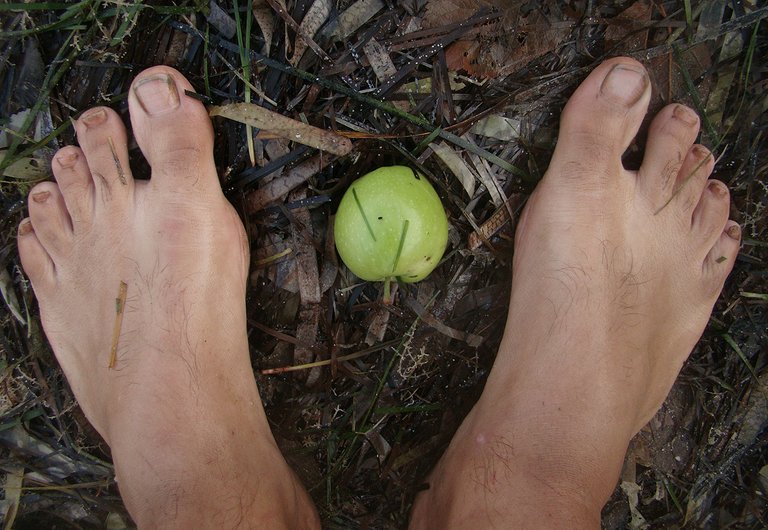
Sometimes the shots can be combined in a way that gives a dose of epic symbolism to the otherwise mundane little journey. Here you can see an apple that fell before my feet, while in the following photograph ...

... a snake passed across them. Things can turn biblical in a blink of an eye, and it can happen even to an atheist like me. God bless this crazy world, amen.
I'll try to prolong this nice religious mood a bit by telling you that you can often find something very angelic in the smelly carcass of a seagull.

The world is full of mysteries.
Pieces of a broken crate can become an alien message written in some unknown alphabet ...
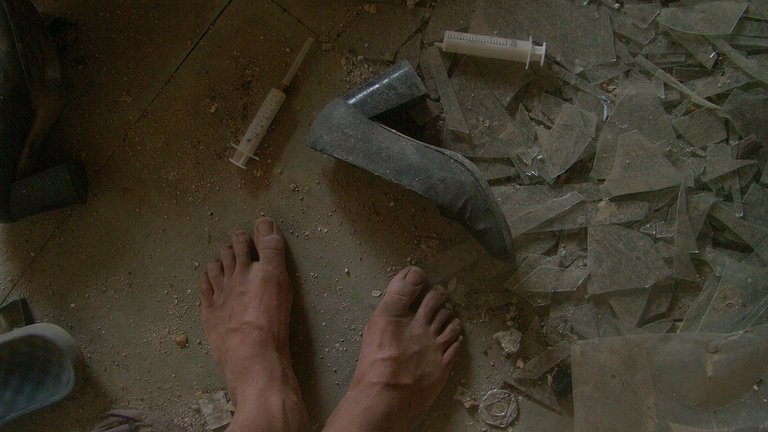
... and fuck if I know what happened here.

This fairly big creature before my feet is a sea slug.
The Aplysia fasciata ...
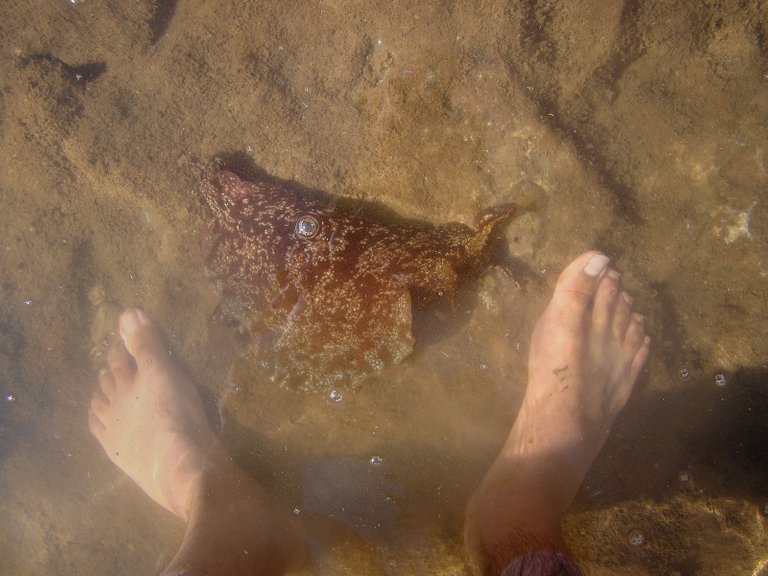
... commonly known as the mottled sea hare.
As you can see in this photograph, the soles of my feet leave the same marks on the dusty terrain as bicycle tires. Isn't that a fascinating phenomenon?
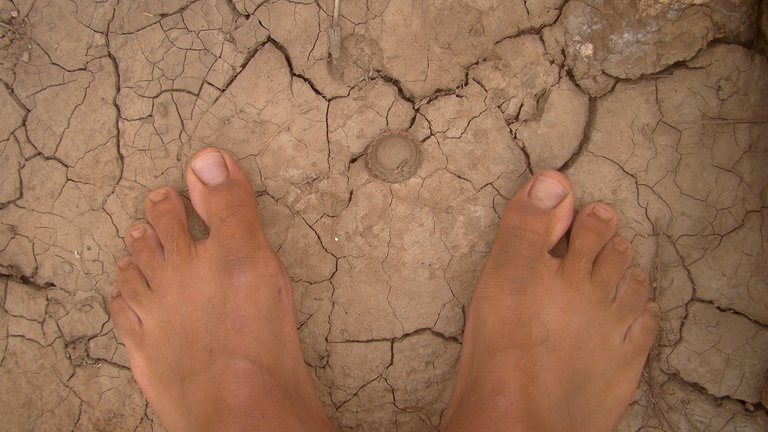
A bottle cap always reminds me of the post-apocalyptic wasteland in the video games from the Fallout series.
Here you can see the remains of an ancient wall ...
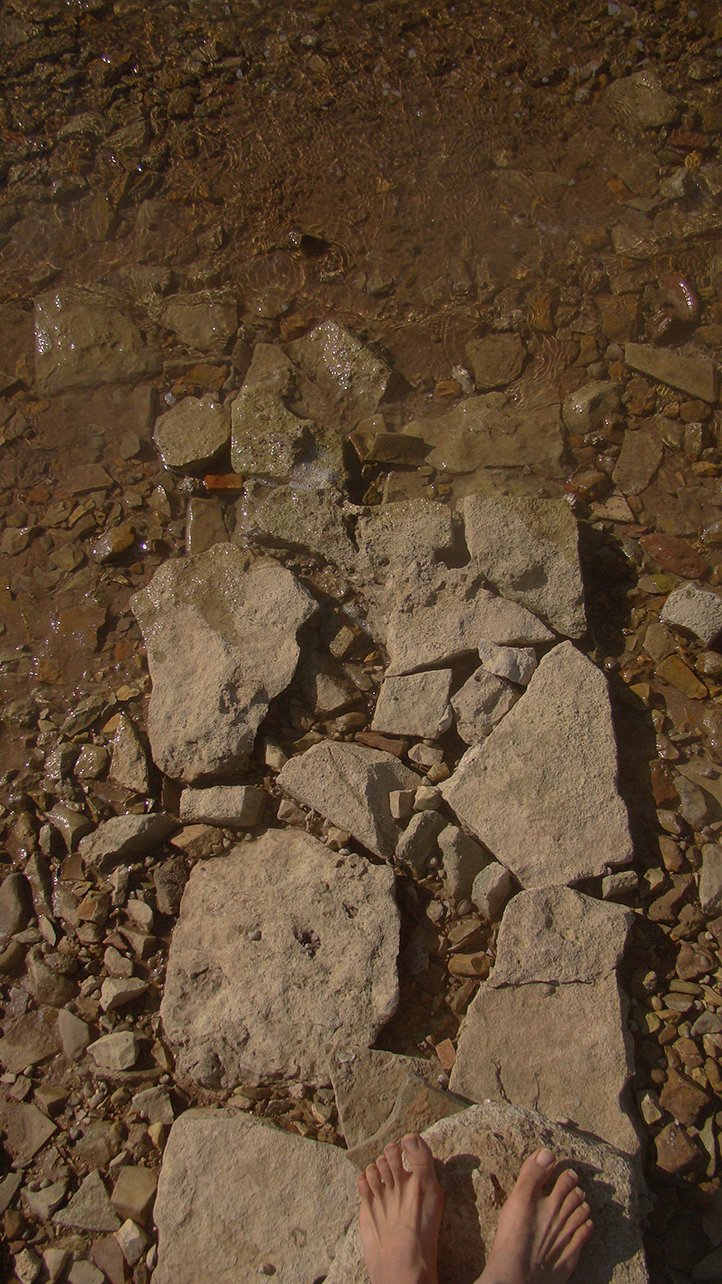
... in the muddy intertidal zone near the harbor of Medulin, my hometown.
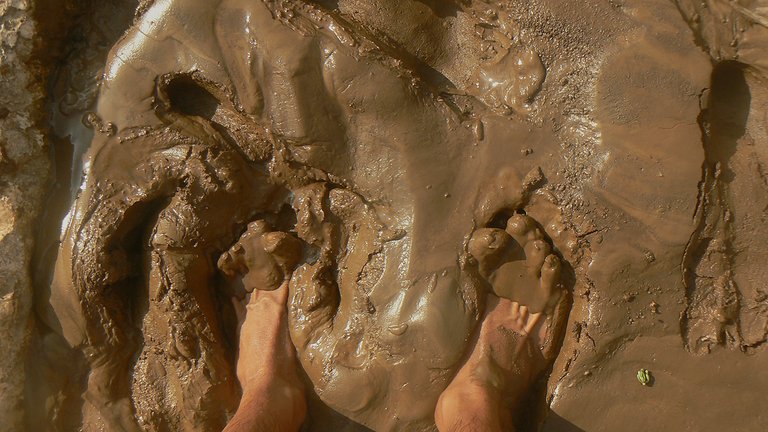
My barefoot walks in those years often ended in muddy places.
Mud feels great when you have no shoes.
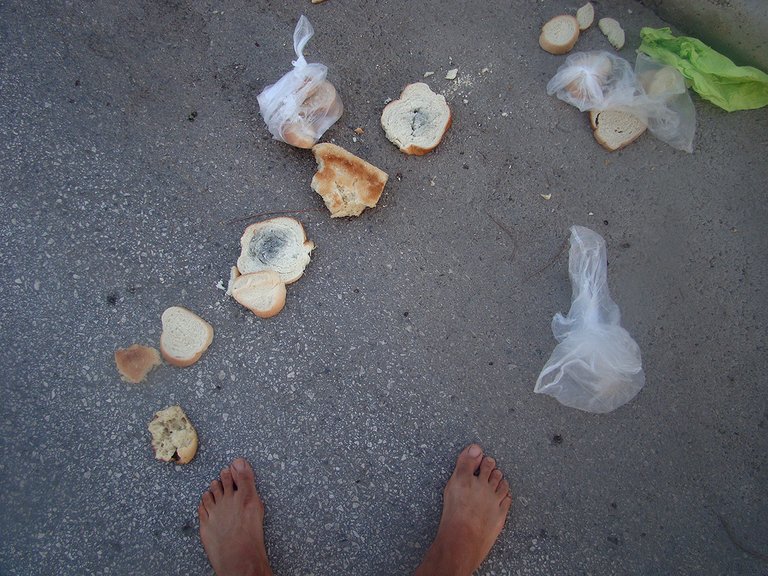
Asphalt - not so much.

Garbage used to be more common in the streets of my hometown some years ago. Ah, the good old days. When the bread could suddenly appear like mana fallen from the sky. Age of gold. Age of abundance.
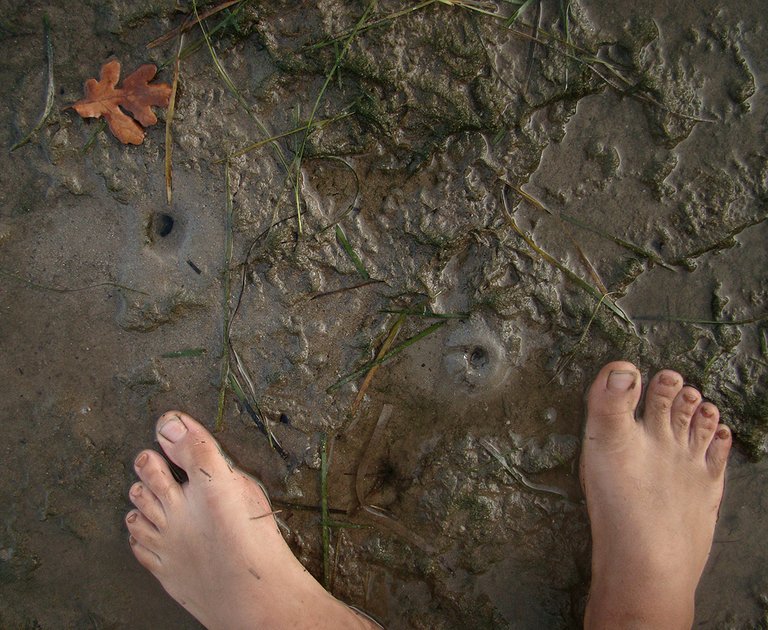
In this shot, I'm back in the muddy shallows.
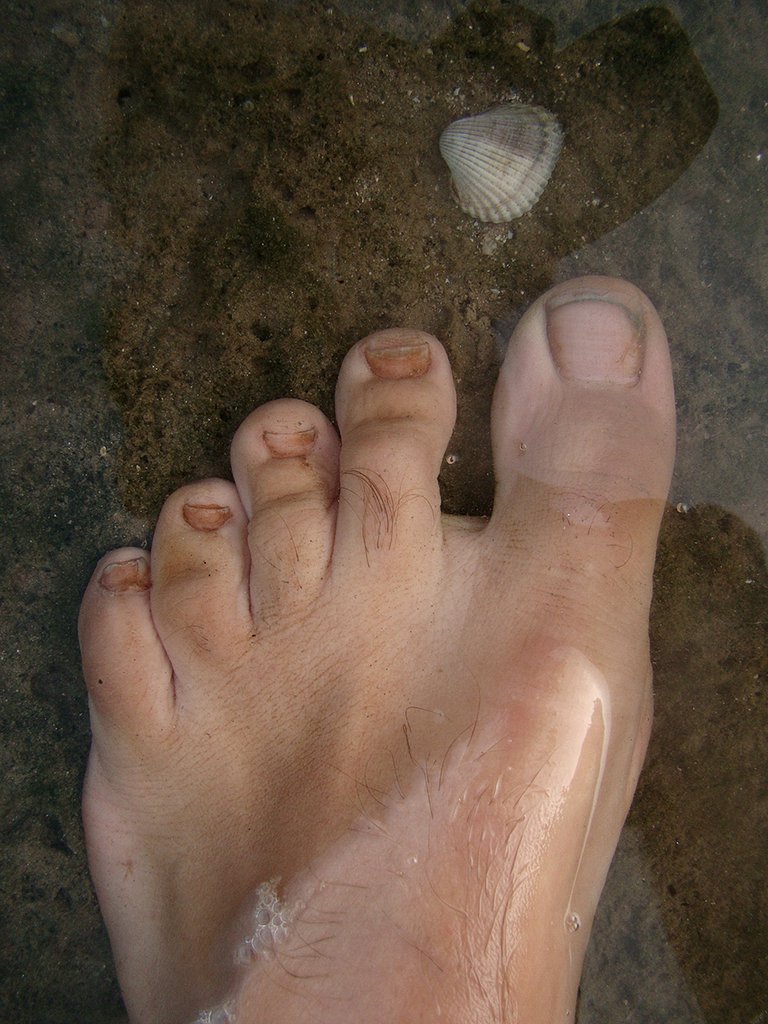
The lovely shells are very common there.
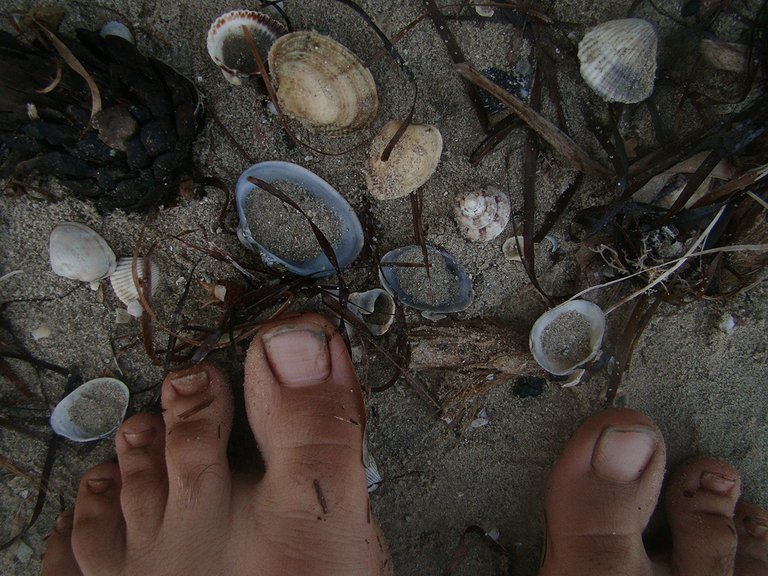
You can find a nice variety of them, especially when the tide is low.
Sometimes, in autumn, you can see colorful leaves floating on the calm water of the bay.
In many inlets, you can see holes in the mud made by clams and sea worms that live there. The tide was at its lowest when this photograph was taken. In the following shot ...
... the water has returned.

This bird ...
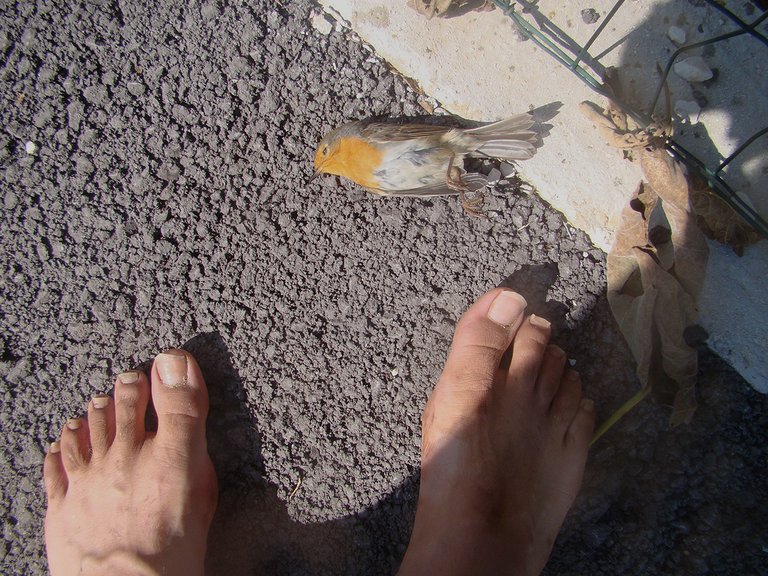
... died on the street, while the string puppet that may or may not be Pinocchio, shown in the following photograph ...
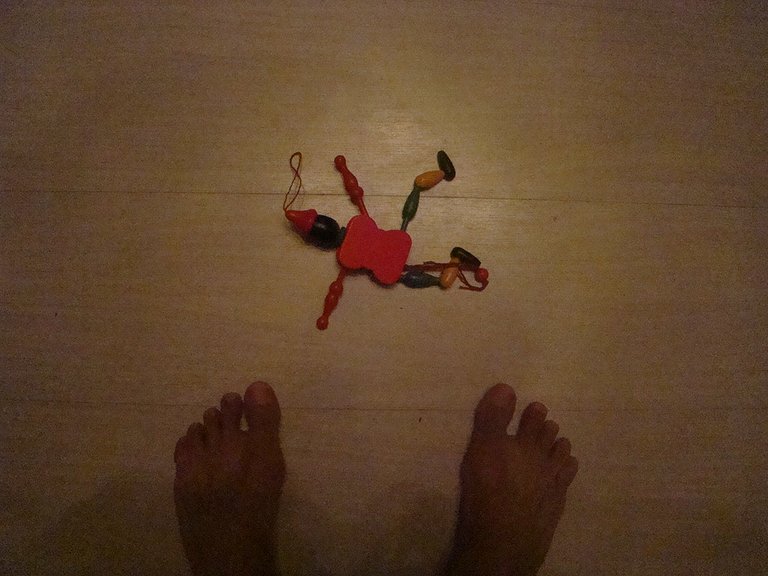
... committed suicide in the living room of a friend of mine that lives in the city.

During the hot, dusty summer, when the surrounding vegetation is mostly dry, you can come across some interesting natural sculptures on the unpaved roads that lead along the beaches of the large coastal area called marlera.
These desiccated plant parts look like alien creatures to me, but everyone is free to see something different, personal, and unique in them, of course.
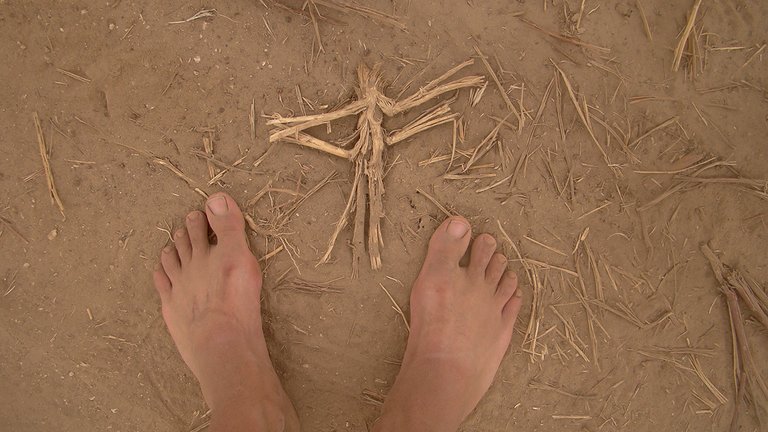
Plenty of cool stuff is regularly displayed on the dusty roads of Marlera. And you can never know what you'll find if you take a sunny walk with your eyes glued to the ground.

Here you can see one of those roads fairly late in the evening. The pale dust looks great in the low light and my feet are nicely decorated with it.
Here you can see a circle of plants that grow on the stony terrain very close to the sea. The thing looks like a little island surrounded by a petrified sea.

The plant shown in the center of this shot looks a bit like some kind of coral.
This one looks dead ...

... but with this resilient, coastal vegetation, is hard to tell.

The leaves or flowers can unexpectedly appear.
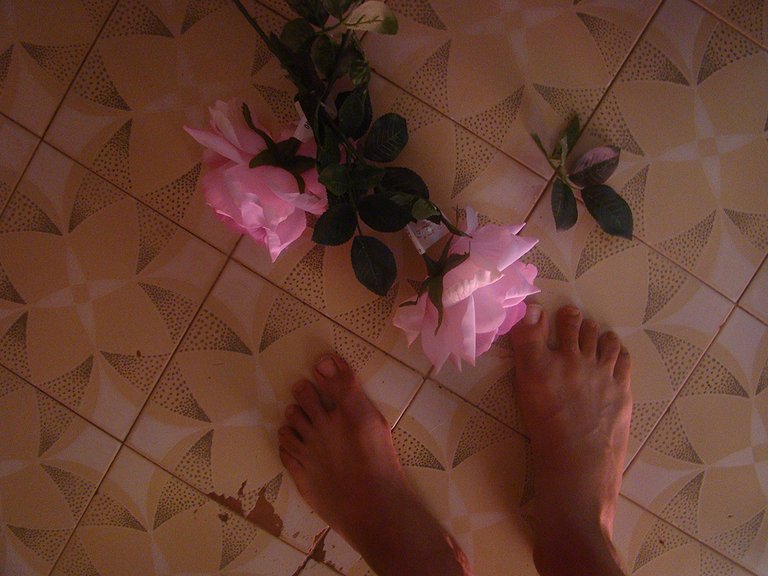
In contrast, you can see the juicy roses on the tiles of my living room, in this shot.
These large leaves were photographed on the pond at the edge of my neiberhood, a couple of hundred meters from my house.

My feet are in the mud again. The leaves and the beautiful white flower belong to the Nymphaea alba plant.
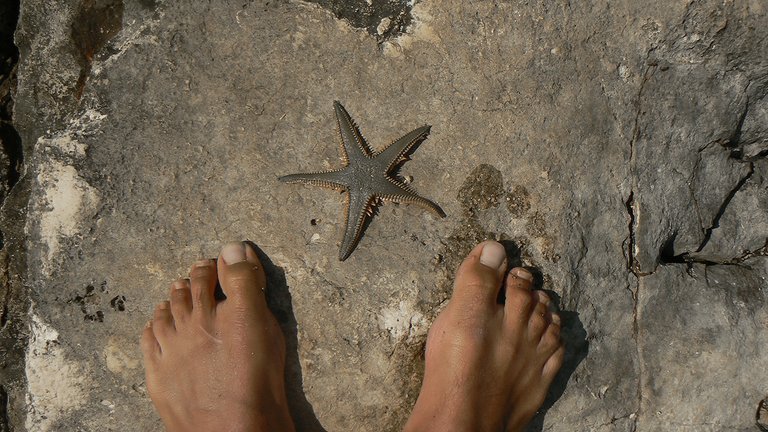
Here you can see a star that fell from the sky. Yeah, sure. It's a starfish, of course. I found it in the sea, photographed it on the coastal rocks, and then returned it to its aquatic habitat. Astropecten bispinosus is the scientific name of this shuriken-shaped animal from the Astropectinidae family.
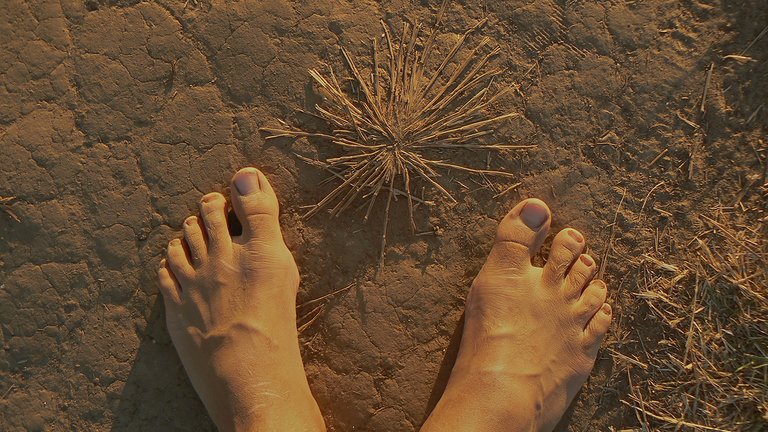
Here you can see a rosette of dried-out grass that also looks like some kind of star. Or a spark.
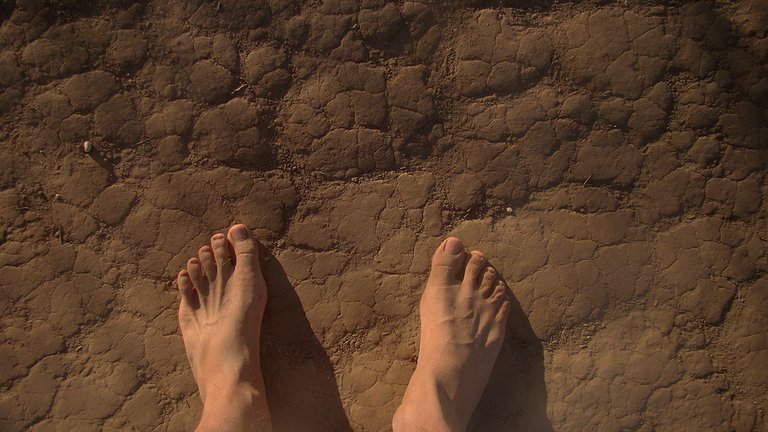
In some places, the road isn't dusty, so the ground below me looks like a skin of an old elephant.

Sometimes, I just stay still and watch the light change the textures of the land.

It's a highly therapeutic lack of activity.
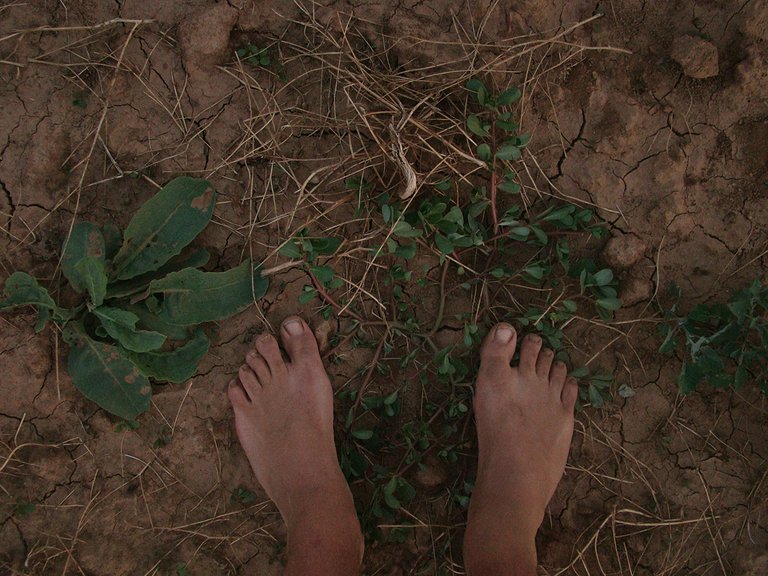
Here you can see some juicy green plants on the recently plowed field.
In this muddy shot, my feet are surrounded by a multitude of small footprints ...
... left by some coastal birds.
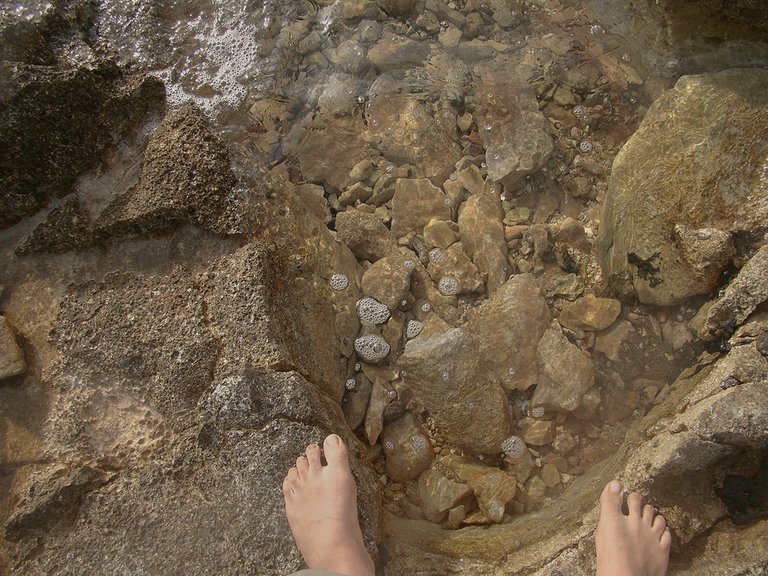
Nothing special here. Just some rocks and the sea. In the following photograph ...
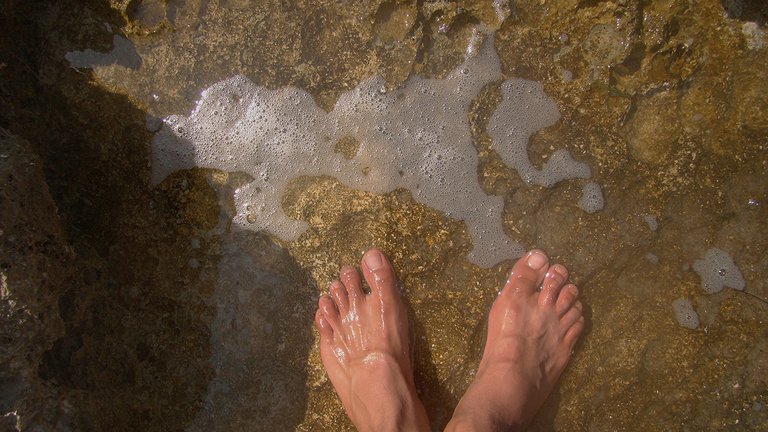
... the focus is on the foam.

Right now, I'm in the middle of the post. And I need an energy drink to bring this thing to an end.
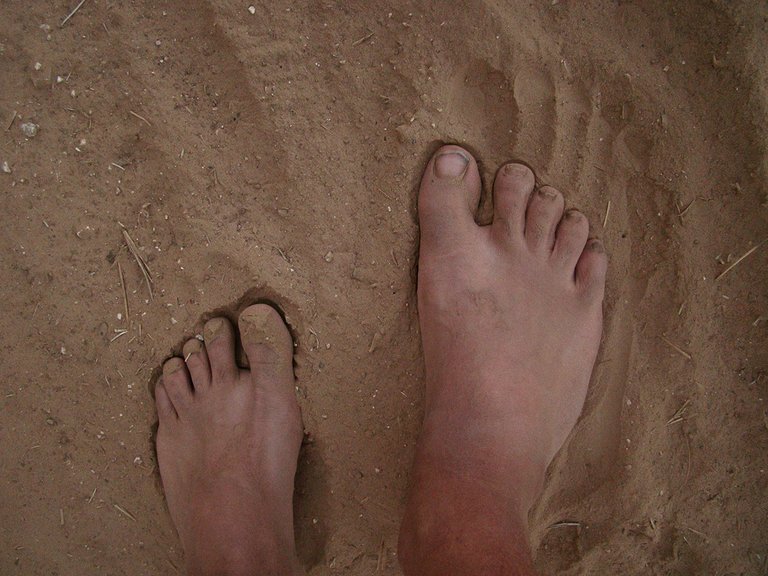
Let's continue ...
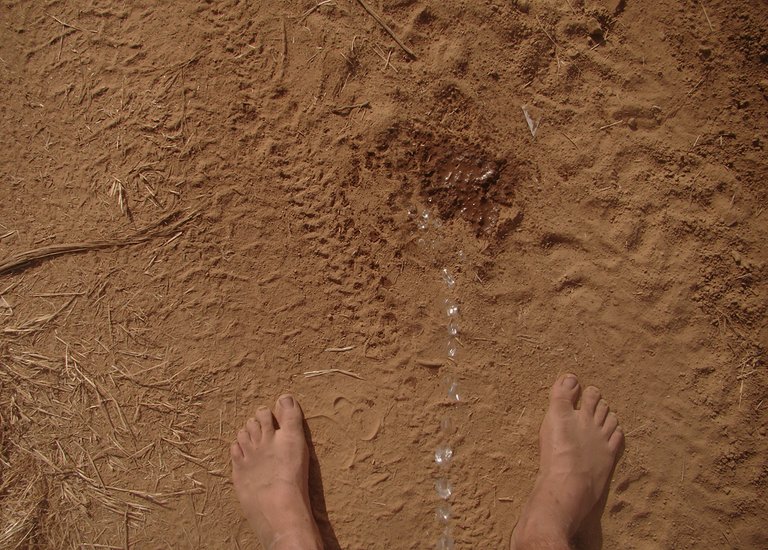
... in the same style.
Besides my feet, which you already saw 62 times in this post, you can also see my footprints here.
In this photograph, I piled up the footprints because I like how they look all together in the subdued evening light.
My feet look a bit like roots or bulbs in this series of six connected photographs.
Sometimes I feel deeply rooted in the thick reddish soil of Marlera.
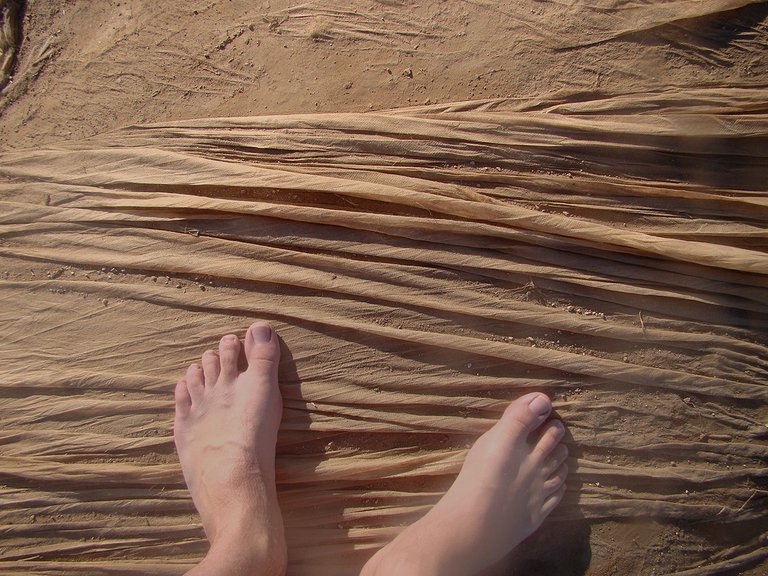
The fields in this area are often covered with some kind of foil that protects the young cultivated plants. The old foil sometimes becomes part of the road.
The same kind of foil looks almost like a wedding dress in this photograph.
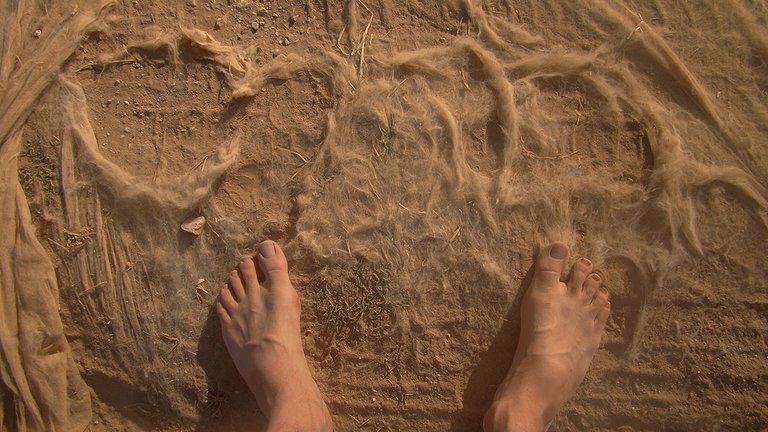
In some places, the destroyed foil was turning into pieces of fluffy material.
Here you can see a dead lizard. It looks like a snake or a worm because it has no visible legs. But this is a lizard. The scientific name is Anguis fragilis.
There is an apple tree in one of the muddy inlets near the harbor of the village called Liznjan, not far from Marlera.
On the 6th of July 2015, two fruits that fell from that tree caught my attention and eight years later, became part of this post.

Just like this shrimp photographed in the same inlet when the tide was slightly higher.
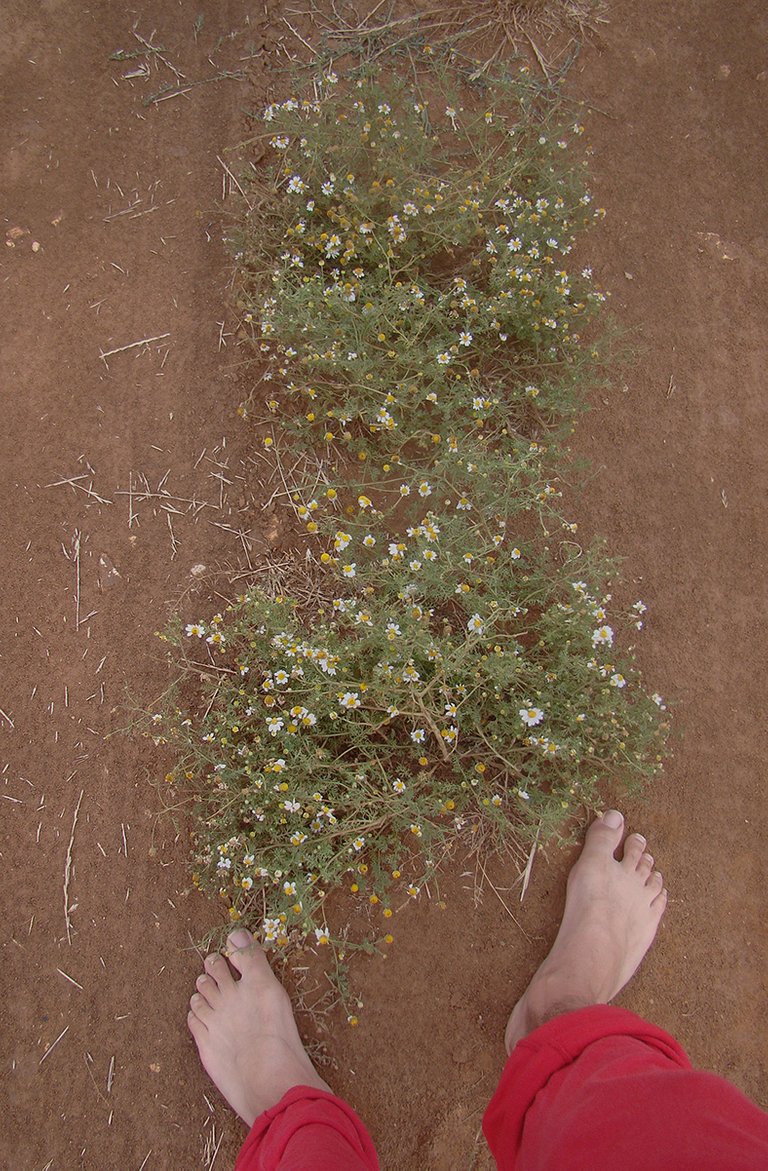
Here you can see a bunch of Anthemis arvensis plants in bloom.
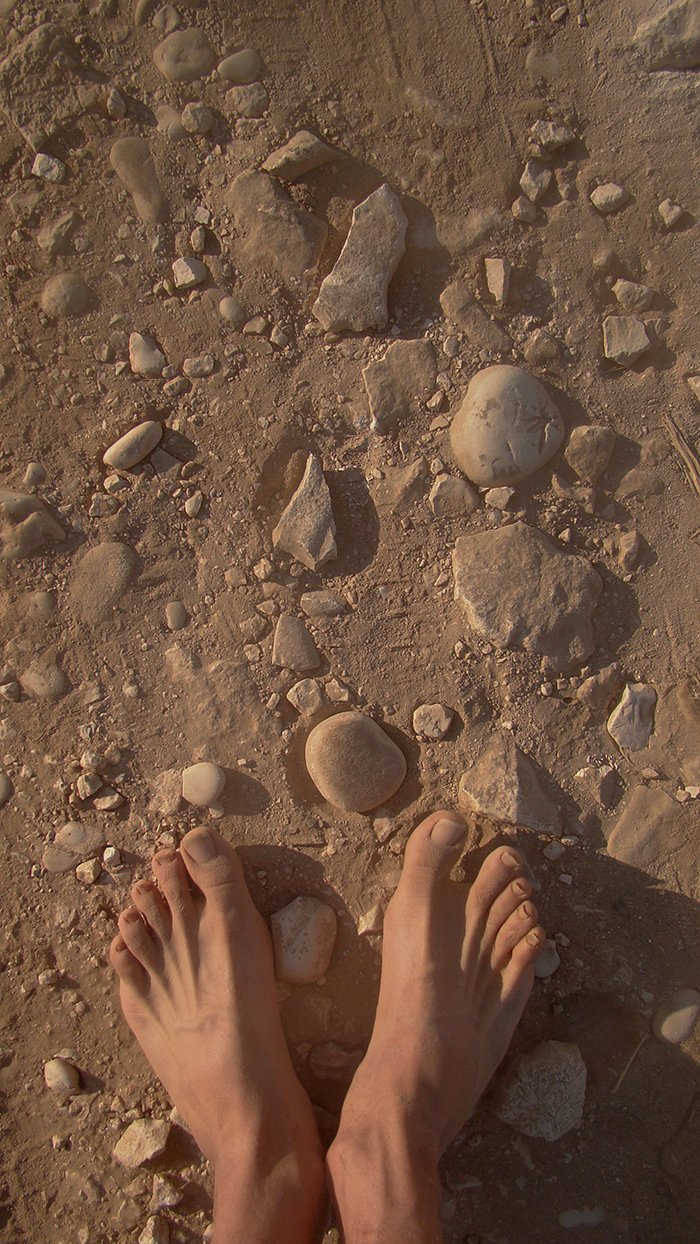
These are just some stones by the side of the road.

In many places, the coastal rocks are covered with limpets. In this, and in the following two photographs ...
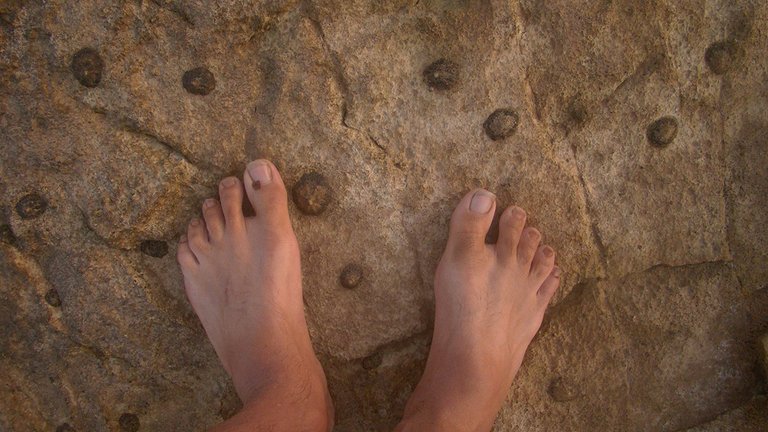
... you'll see a bunch of those limpets ...

... and my feet, of course.

Here you can see another plant that grows among the rocks in the intertidal zone. I'm not sure about the exact species. It looks a lot like the Sarcocornia fruticosa, that's for sure.
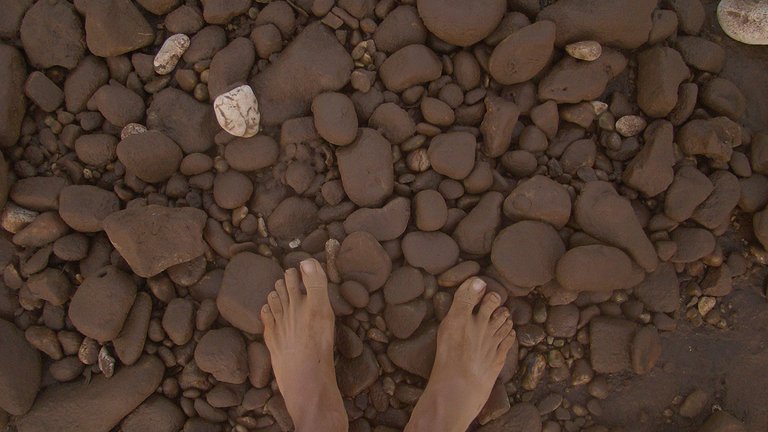
The rounded stones and pebbles in Marlera are mostly white. But in some inlets, they are covered with a thin layer of mud and algae that make them look like chocolate cookies.

Here you can see plenty of mud and just two pebbles.
In this photograph, the rhizomes of the cut-down reeds are protruding from the dry soil by the side of the unpaved road.
Here, especially if you enlarge the image by clicking on it, you can see the Psilurus incurvus grass that forms a multitude of little half-circles or twists (I don't know how to call these things down on the dusty ground) when it dries out in the middle of the summer.
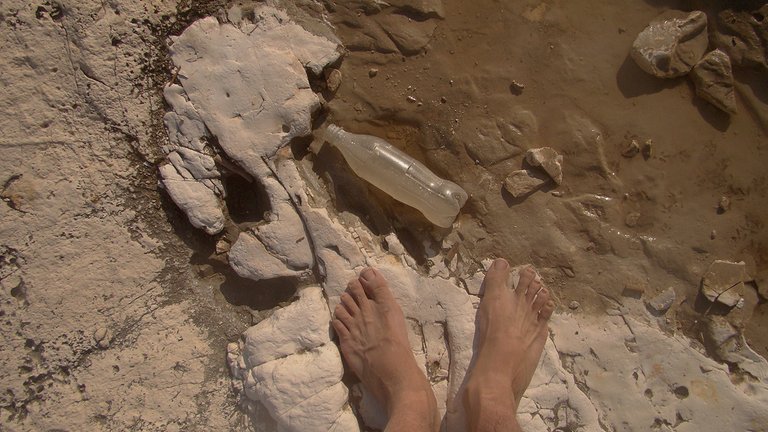
The Coca-Cola bottle shown in this photograph is encrusted with salt and that salt makes it look less intrusive in the natural environment.
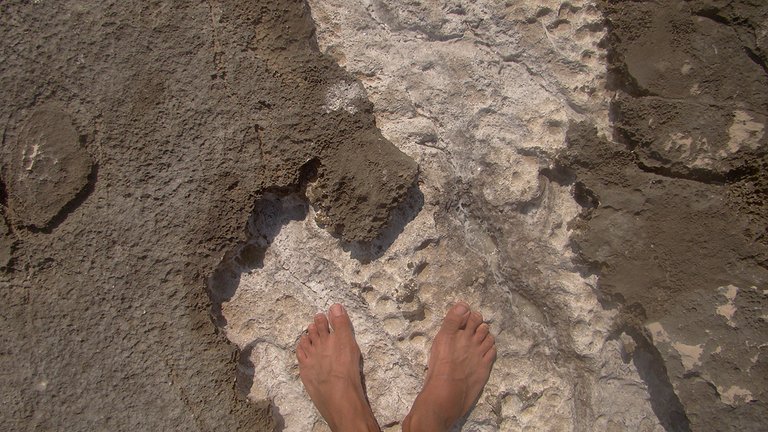
The part of the coastal rock on which I'm standing here is also covered with a relatively thick layer of salt that gives it a white appearance.
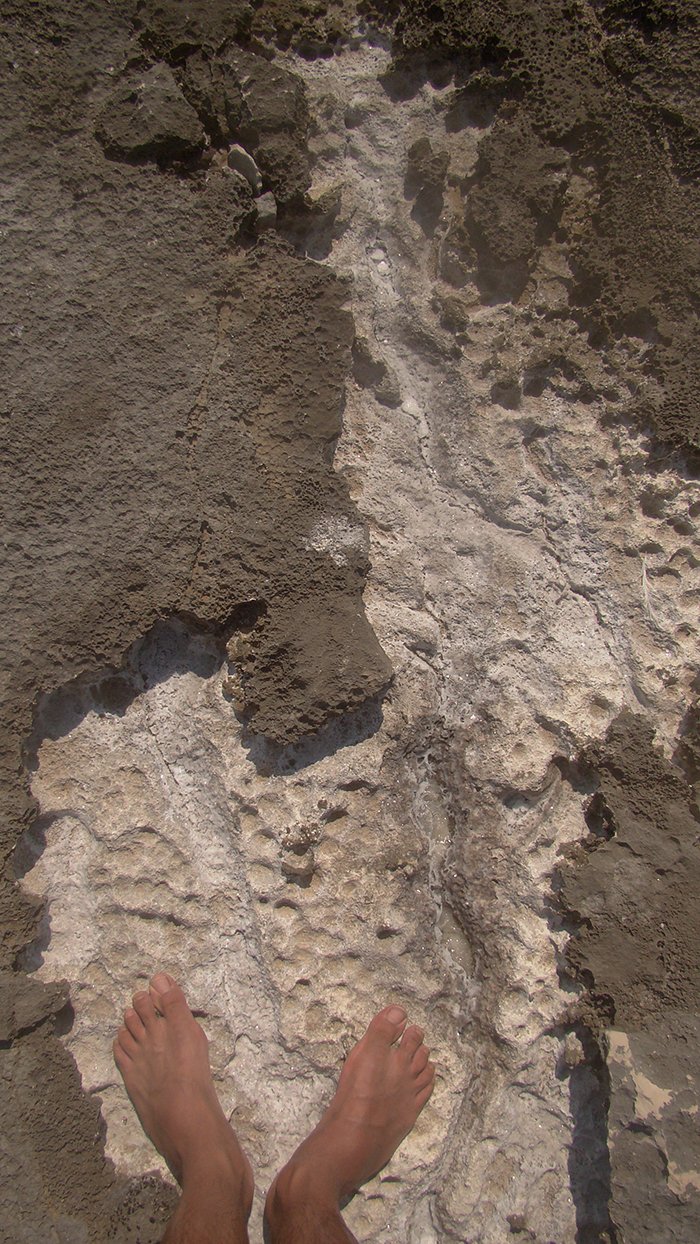
The sea fills the shallow pool when the tide is exceptionally high.
But then the stagnant water has plenty of time to evaporate and leave a layer of salt.

In some inlets, you can find very thick, soft carpets made of seagrass brought by the waves.
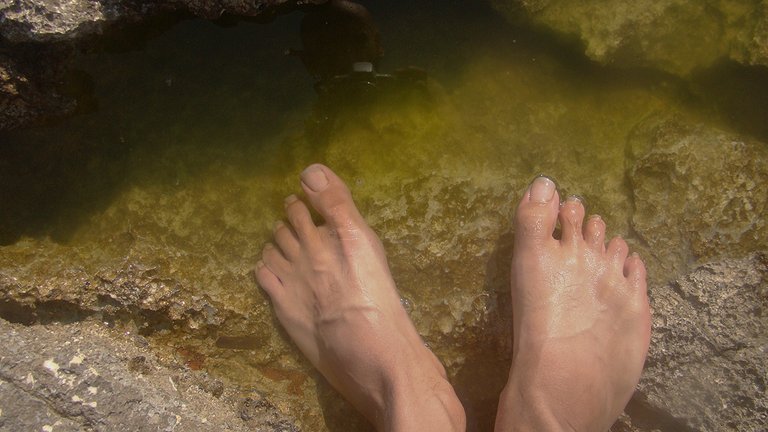
Here you can see a deeper pool of stagnant, brackish water that hasn't evaporated yet. Being out of the reach of the highest tides, a pool like this gets filled by a combination of seawater brought by the bigger waves and the rain.
This buoy was photographed in the area near the harbor of my hometown.
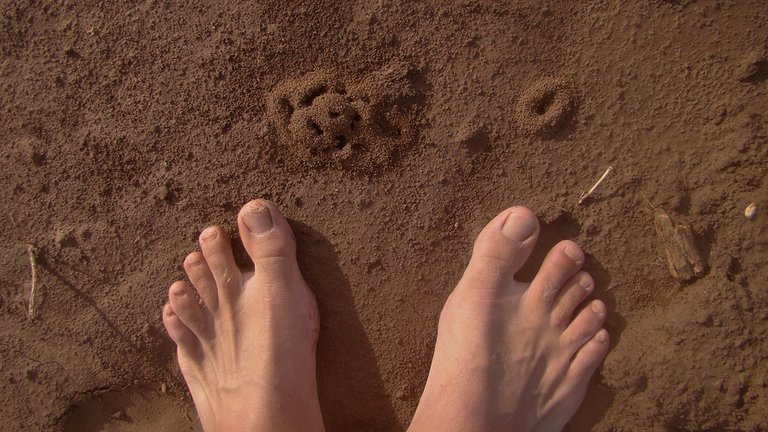
Here you can see the traces of ant activities in Marlera.
A bunch of holes that serve as entrances to the underground nest of harvester ants.
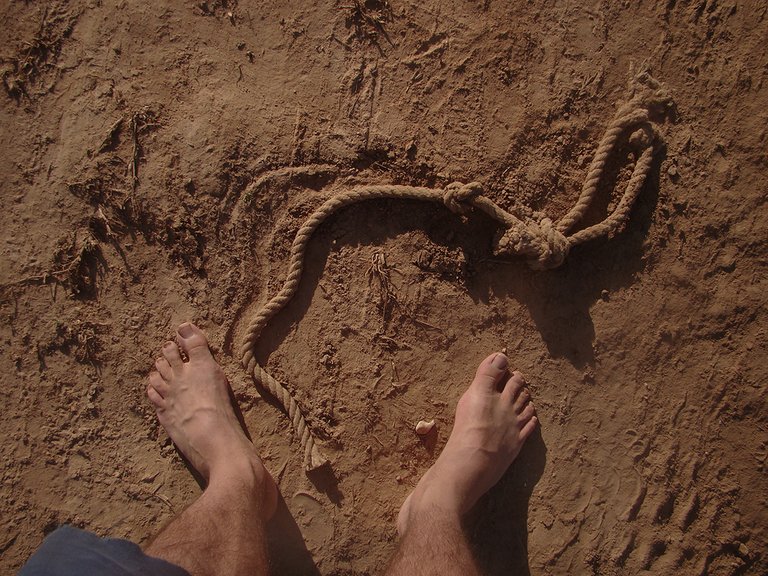
Nothing special here. Just a piece of an old rope that has seen better days.

My feet are slightly bloody in this photograph. I probably got hurt while snorkeling around in the shallow water. But who knows? I don't remember and no one was there with me.
The footprints shown in this photograph were created by a seagull. Or a bunch of seagulls. I don't know.

These feathers were also left by the seagulls.
You can see a dead lark here.
This lovely pattern was created by the fragments of bathroom tiles that someone threw in nature instead of bringing them to appropriate waste disposal.
No trash was involved in creating the pattern shown in this shot. The small tiles are just the dry crust of the cultivated field.

This is a scene from yet another muddy inlet. The same can be said for the following photograph as well.
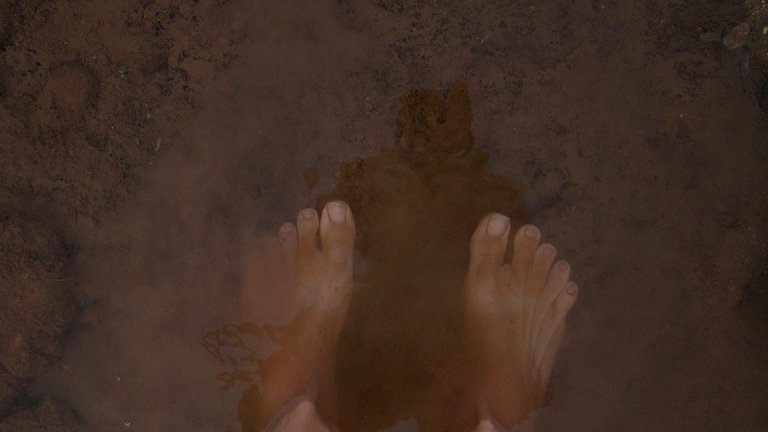
Yep. Just another muddy inlet.
Here you can see some pebbles before my feet. Some of them look like eggs. When I was a kid, my Grandma used this type of pebbles in the henhouse. The chickens were prone to lay their eggs in places that had a pebble or two. That way, Grandma was controlling their nesting habits. I think I'm gonna prepare myself some scrambled eggs and have dinner before finishing the post.
Badgers are quite common in Marlera, but because of their nocturnal lifestyle, you can rarely see them alive. This one, unfortunately, died. That's how the poor animal entered the post.
And that's it.
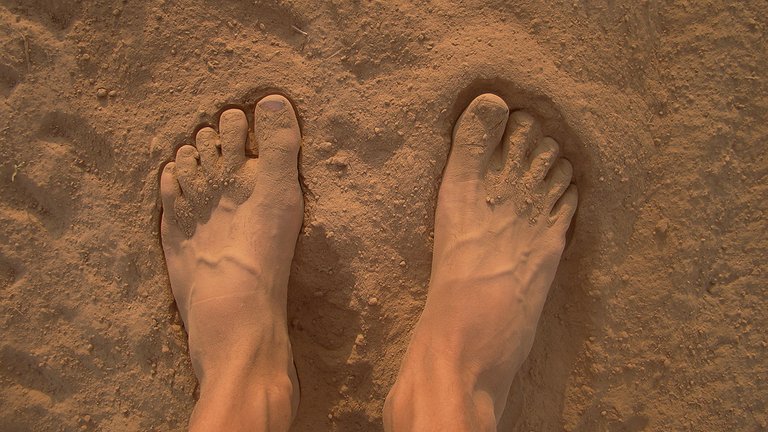
I'm only a few steps away from the end.
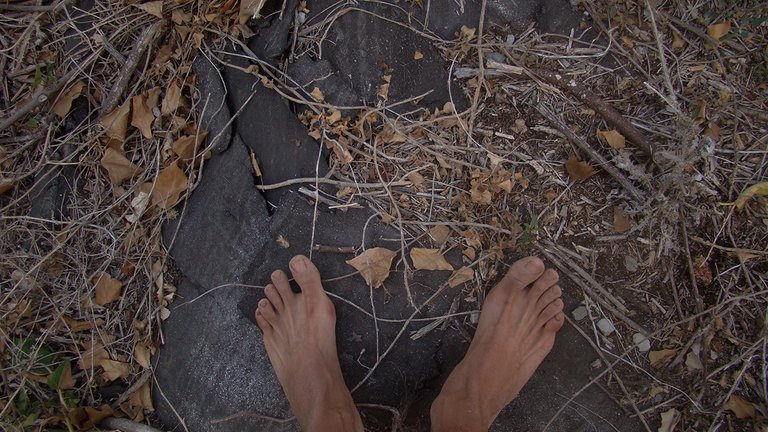
As always here on HIVE ...
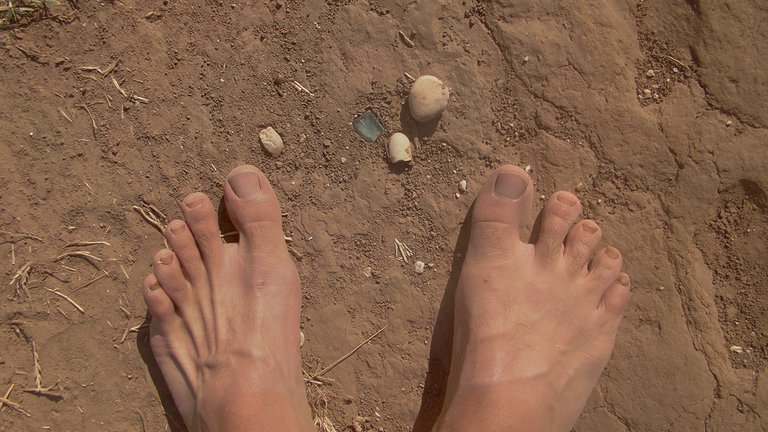
... the photographs are my work.

